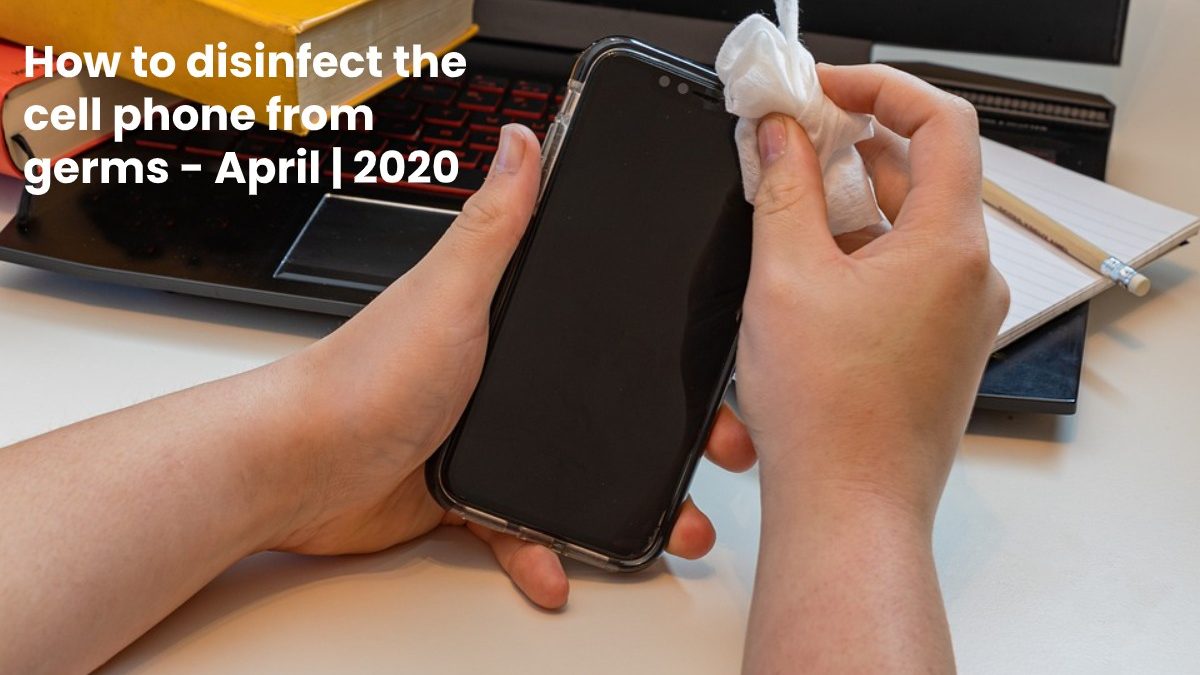The Coronavirus pandemic (COVID-19 virus) keeps the world’s population on edge. In the face of the growing wave of infections, health prevention is the possible defense mechanism recommended by professionals of the World Health Organization.
Our hands, as we well know, are one of the primary sources of infection, but. Did you know that the mobile phone can contain up to 600 types of bacteria and be more dangerous than the toilet bowl? To keep viruses at bay, In this article, we explain how to disinfect your cell phone from germs so that your phone is not a contagious agent.
Also Read: Is it safer to connect to public Wi-Fi networks?
Tips for Disinfecting the Cell Phone From Germs

In quarantine times, our mobile phone represents a fundamental tool to stay connected to the world. However, it can also become a bacteria pit, as we don’t always handle our phones with really clean hands and often expose it to dirty areas.
Coronavirus is transmitted mainly by bacteria acquired through human contact and in contaminated environments. The respiratory tract and our hands are the main drivers of the virus since bacteria are deposited there more quickly.
This is why personal hygiene and disinfection of the objects we handle daily is essential. Before talking in detail about how to disinfect your cell phone from germs, we share with you some basic tips that you should follow before you start
- Turn off the mobile before starting
- Disconnect your cell phone from any current and external device
- Avoid spraying liquids directly on the surface of the cell phone
- Follow these steps to disinfect your phone at least once a day
Also Read: Advantages of a Wi-Fi Mesh System Over Repeaters
How to Disinfect the Cell Phone From Germs and Bacteria (steps)
- Although this first step is optional. We recommend using disposable latex gloves to protect yourself.
- Next, turn off and disconnect your phone from any connected device (headphones, chargers, USB or HDMI cables, etc.)
- It is also convenient to remove the battery to avoid setbacks. Similarly, remove its protective cover.
- It is best if you use a clean microfiber cloth. Moisten it with isopropyl alcohol (wetting a tip will be necessary) and clean the areas of greatest contact (the screen, the speaker, the edges, the cover) using circular movements, without putting much pressure on the screen.
- You can also use disinfecting wipes that contain 70% isopropyl alcohol or a cotton pad.
- Avoid using fluffy or fleecy cloths and spraying liquids directly on the mobile.
So, if you want to know how to disinfect your cell phone from the germs that inhabit it, you will have to get a bottle of isopropyl alcohol.
How to Clean the Mobile Phone Case
If you are wondering how to disinfect the cell phone from bacteria and viruses, you should know that the cover is an element that cannot be forgotten, since it is in contact with any potentially contaminated surface. Of course, you must remove the case from the phone before cleaning it to do it correctly. We continue explaining how to disinfect the cell phone, focusing now on the case:
- If it is a transparent cover, immerse it in a container containing warm water and dishwasher soap.
- Leave the cover submerged for 30 minutes and then wash it with plenty of water.
- If the sleeve is heavily tanned, soak it in water with a tablespoon of baking soda and a squeezed lemon. Let the mixture work for half an hour and then wash it off with detergent soap and water.
- If, on the other hand, your cell phone case is made of leather, you should clean it with a lint-free cloth (preferably microfiber).
- Dampen the cloth with water and add isopropyl alcohol in one of its corners.
- Continuously rub the surface with greater intensity in the stained areas.
- Then go over with a soft dry cloth.
- Similarly, you can clean synthetic material covers with an old toothbrush.
- Dip the brush into a container of dishwasher soapy water, then circularly rub the surface of the sleeve to remove stains and impurities.
- Wash the cover in cold water and dry with a soft, clean cloth.
Also Read: 10 Tips for Creating the Perfect or Strong Password

